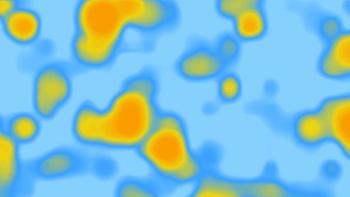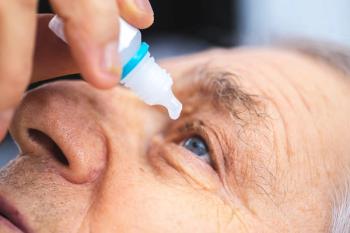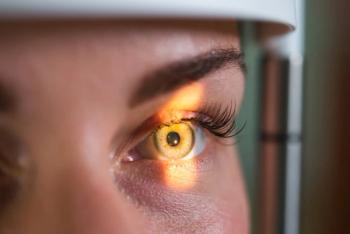
Waveform data target at-risk eyes
Studies conducted with waveform data obtained using a non-contact applanation tonometer show that this information pertaining to corneal biomechanical properties may have value in helping to identify early-stage compromised corneas, according to one expert.
Dr. Luce is chief scientist, Reichert Inc., Depew, NY.
He described how the waveform data have been used to develop a "keratoconus score" that appears to generate results consistent with current topographic-based methods for diagnosing keratoconus. In addition, he reported results from a study including a series of 26 patients with unilateral keratoconus that showed some of the topographically normal fellow eyes were identified as having suspected or mild keratoconus based on waveform analysis.
"Corneal collagen cross-linking (CXL) is emerging as a method for stopping keratoconus progression, and thus ORA waveform analysis indicating pre-topographic corneal abnormalities may permit prevention of keratoconus before vision quality is affected," he said.
Scoring method
The device measures biomechanical properties of the cornea using a dynamic bi-directional applanation process.
Its output on corneal biomechanics includes values for corneal hysteresis and corneal resistance factor as well as 38 waveform morphology parameters that are represented in a "biocorneagram." Presenting representative biocorneagrams, Dr. Luce demonstrated dramatic differences between normal and keratoconic eyes.
The keratoconus scoring method was developed using data from 826 normal eyes and 193 eyes with keratoconus using a formula that normalizes mean values to "1" for the normal population and to "0" for the keratoconic eyes.
Selection of individual waveform morphology parameters to include in the keratoconus score is based on single-parameter t-test p values.
In one analysis using just five parameters that were significantly different between the keratoconic and normal populations, the keratoconic population could be separated from the normal eyes with an uncertainty area of only 1.8%, he said.
Scores for reference populations
Further studies were conducted using eight waveform parameters to define scores for five reference groups (normal subjects and eyes with forme fruste, mild, moderate, and severe keratoconus) as well as for the keratoconus and topographically normal fellow eyes of the 26 patients with unilateral keratoconus.
Comparisons with the reference populations showed that the latter keratoconic eyes had scores similar to the population with mild keratoconus while the topographically normal fellow eyes had a mean score close to that of the population with forme fruste keratoconus.
"However, the devil is in the details," Dr. Luce said, "because by looking at individual measures we can calculate the probability that each eye lies within the various diagnostic categories."
Results from that analysis showed that only eight of the 26 "normal" contralateral eyes were categorized as normal, while four were categorized as showing mild keratoconus, six as clearly suspect, and eight as having a small amount of suspicion.
The ORA keratoconus software currently is not available in the United States.
FYI
David Luce, PhD
E-mail:
Dr. Luce is an inventor of the ORA and holds patents on the technology.
Newsletter
Want more insights like this? Subscribe to Optometry Times and get clinical pearls and practice tips delivered straight to your inbox.









































